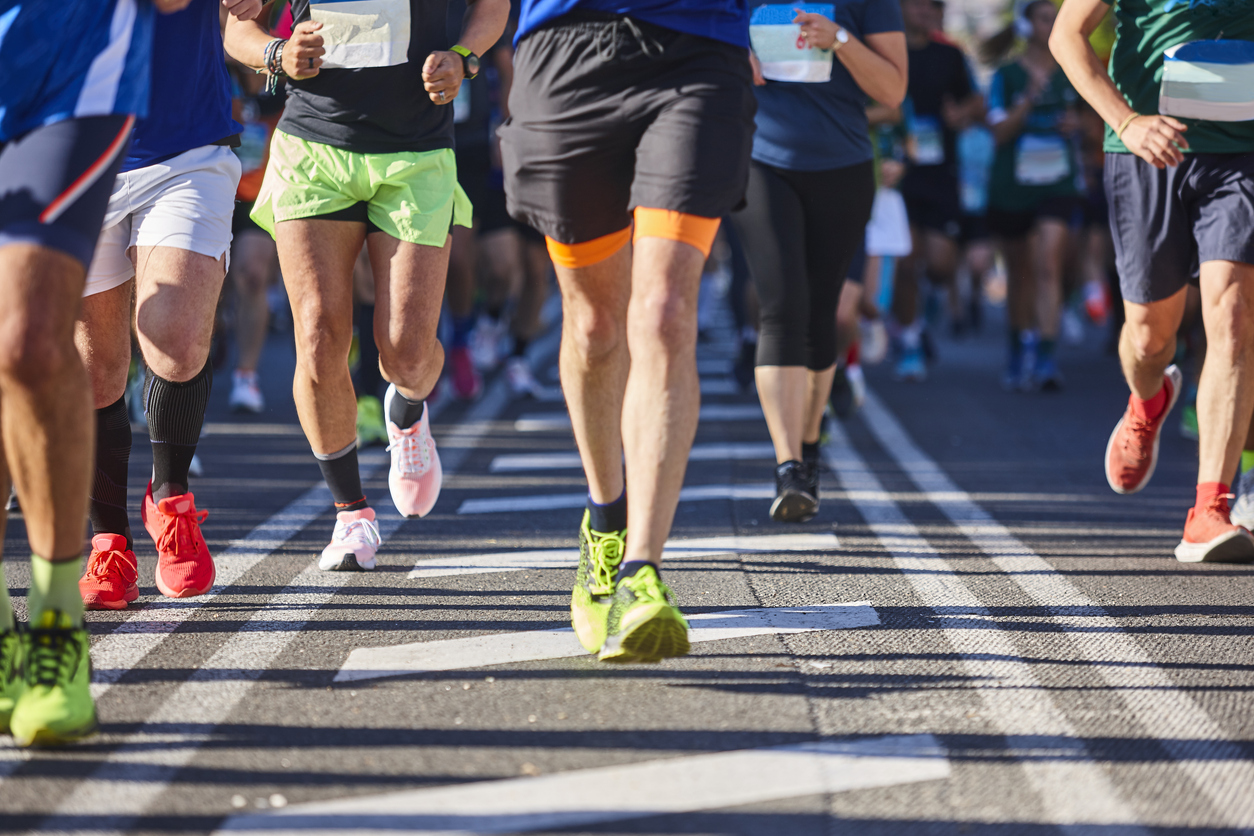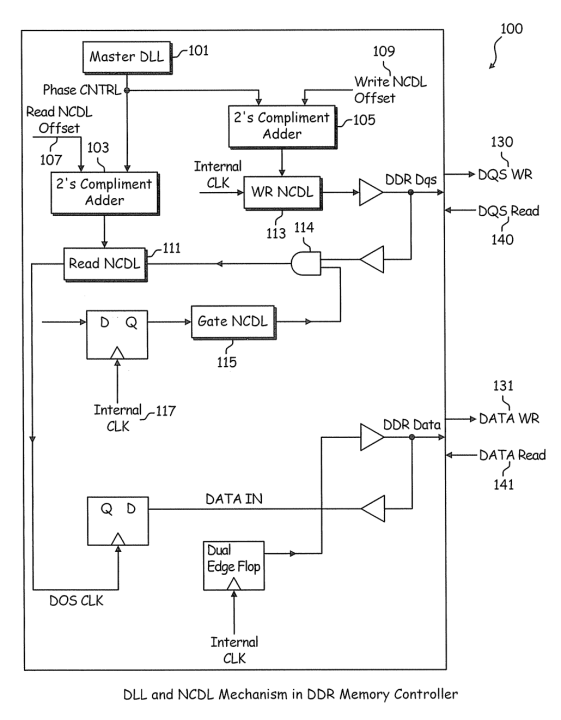Earlier in 2021, I shared that I would be training for the 2021 Chicago Marathon. Road races are slowly making their return around the globe and it just so happens to be race week here in Chicago. As a variety of things run through my head before I toe the line – I started to think about the history of running and how IP innovation has helped propel athletes forward in terms of performance.
Fleet Feet
There are plenty of companies that come to mind when we think about running shoes. But for the sake of my brand loyalty, let’s take a look at Nike which has a history of innovation with thousands of shoe design patents.
Going back, I wanted to take a look at one of Nike’s earliest design patents for a running shoe and compare it to a more recent model. Using the ktMINE Search App I discovered the following design patent for one of the earliest Nike shoe models from 1974.
US3793750A – Athletic Shoe for Artificial Turf
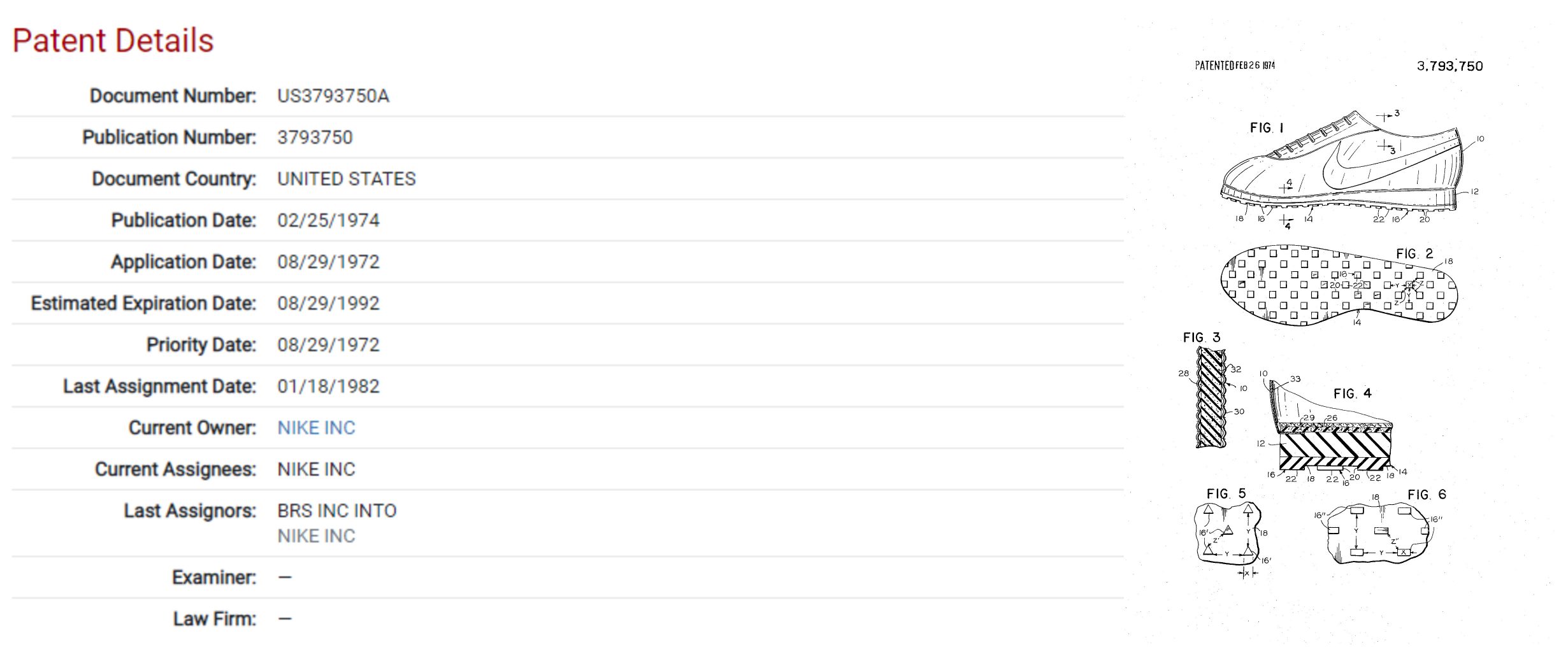
Source: ktMINE Search App
The patent provides the following details, “An athletic shoe suitable for use on artificial turf is described including an improved upper of a porous multiple layer construction and an improved sole having integral polygon-shaped studs.” Or the famous waffle sole that Nike is known for.
Jumping a couple of decades, the conversation around performance heats up. Can a shoe really make us faster and avoid injury? Well, Nike set out to test this theory with a shoe specifically designed to help in the pursuit of a sub-TWO-hour marathon in 2019. That’s roughly a 4:34 mile pace for 26.2 miles!
US2019365034A1 – Stacked Cushioning Arrangement for Sole Structure
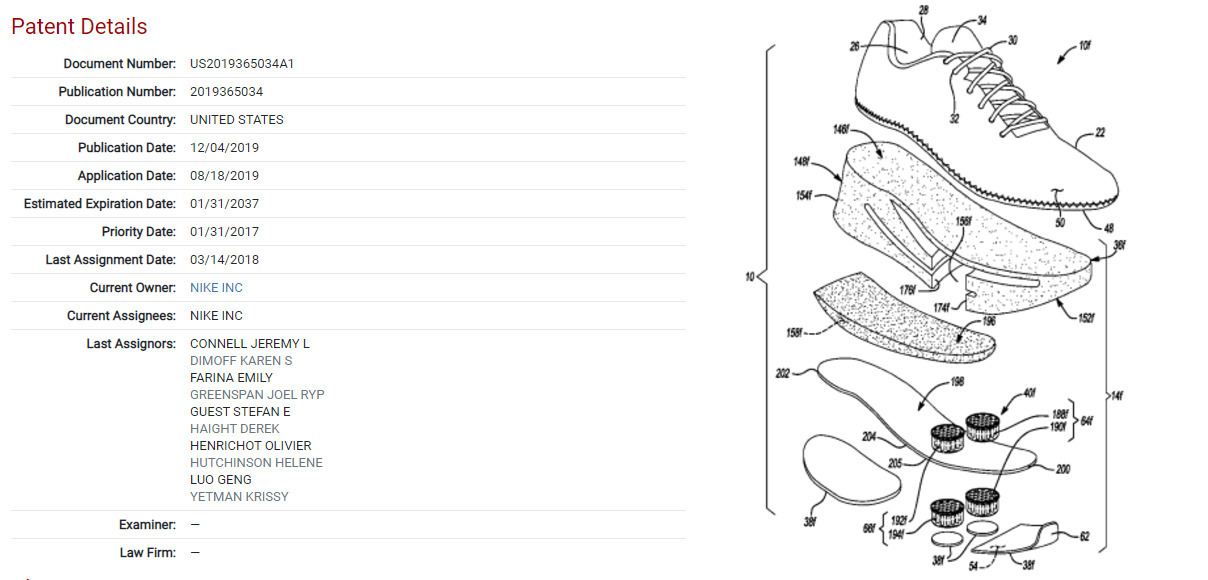
Source: ktMINE Search App
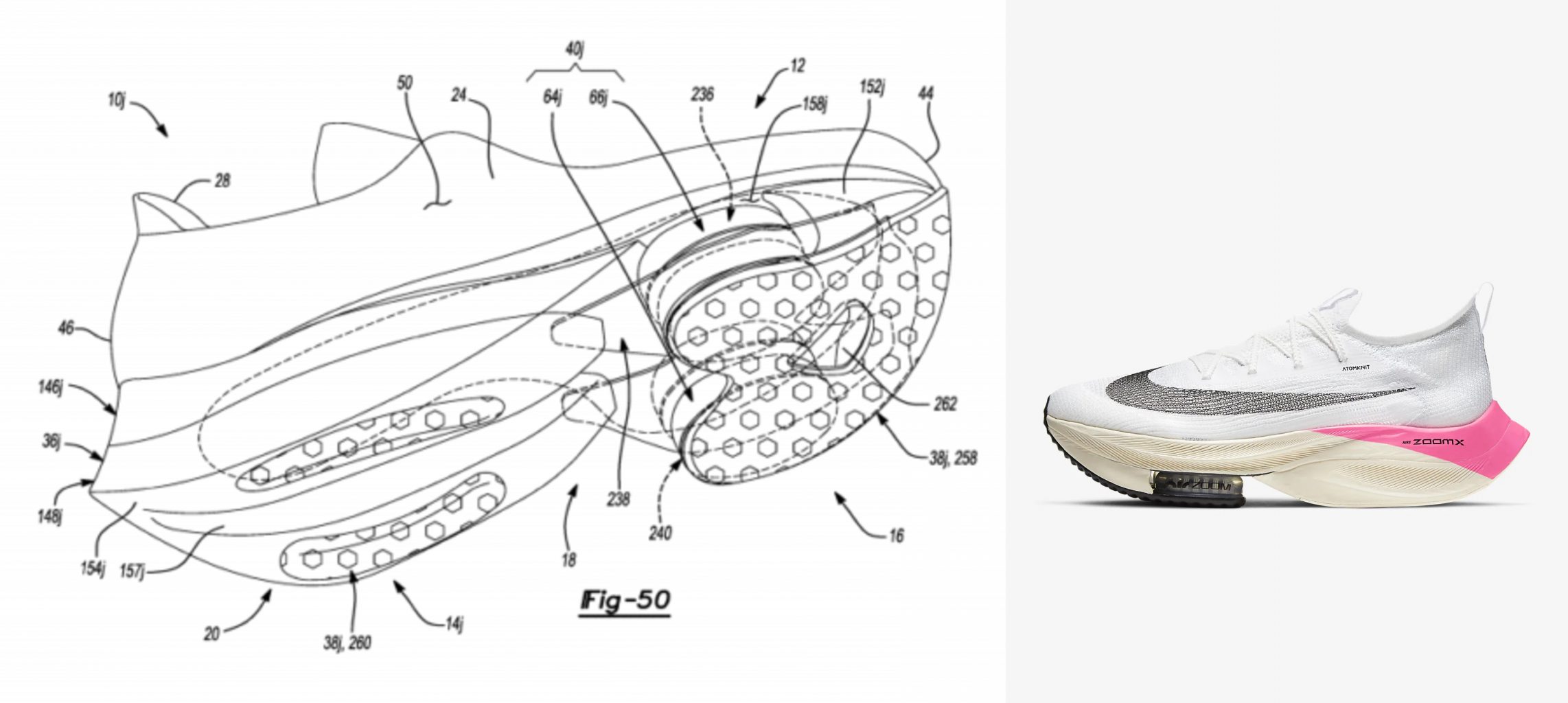
Source: ktMINE Search App
This is the patent for Nike’s Alphafly running shoe which is comprised of carbon fiber plates, foam, and fluid-filled chambers. In other words – the shoe is light and springy to help absorb shock on the joints while aiding in pushing off from the ground. The prototype was worn by Kenyan long-distance runner Eliud Kipchoge on a course in Vienna, Austria when he accomplished the feat in 1:59:40. While it does not count as a world record since it was a controlled environment vs. an official race – it shows what is possible and some can argue the shoes had a positive impact on his performance.
Fuel up!
Shoes are obviously an important part of running. But what about fuel? Scientific research has progressed how we approach fuel our bodies before, during, and after physical activity such as running. The days of simple H20 are long gone and similar to shoes, everyone is on the hunt for a drink, gel, or chew that will give them the competitive advantage. Let’s take a look at an old standard and new concepts entering the running space.
By now everyone has probably heard of Gatorade and maybe taken a sip or two. For quick background – the drink was developed by researchers at the University of Florida to help athletes perform in warmer temperatures to minimize fatigue. Dr. Robert Cade developed the formulation for the popular sports fuel we know today.
US4981687A – Compositions and methods for achieving improved physiological response to exercise
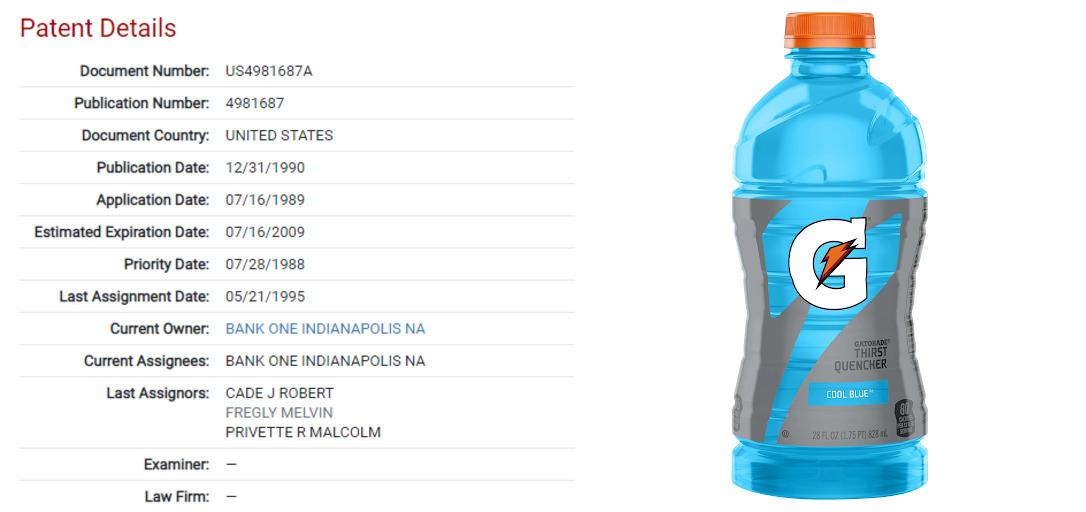
Source: ktMINE Search App
The mix is comprised of fluids containing water, sugar, electrolytes, can be rapidly absorbed through the gastrointestinal tract, prevents decreases in blood volume, and acts as an energy source. In other words, a drink that helps to maintain hydration and key nutrient levels in the body while performing physical activities. After being around for more than 50 years, Gatorade shows no signs of slowing down with other innovations in the pipeline that includes custom fuel kits for specific sports and athletes. It will be interesting to see if any of these developments make it to the running space.
Another nutritional supplement that has become popular over the last few years comes in the form of a gel. These gels can be found at races, online, and in specialty stores all with the claim of being able to help performance and avoid a crash. Since there are so many, let’s take a look at a patent for an electrolyte energy gel.
US2005095271A1 – Electrolyte Energy Gel
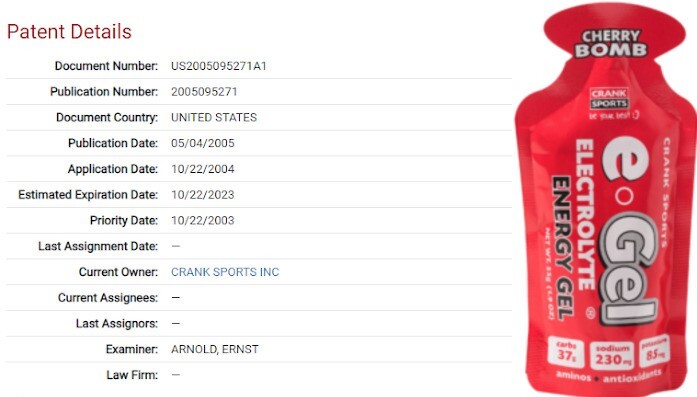
Source: ktMINE Search App
The energy gel by Crank Sports uses carbohydrates instead of simple sugars to increase energy uptake and also delivers electrolytes to the body to minimize strain on the body during physical activity.
I definitely believe that training goes hand-in-hand with any sort of endurance activity. But, I also believe in technology and innovation. It is amazing to see how IP has advanced the sport of running and helped athletes attain new personal bests. Whether you’re training for a 5k, marathon, or looking to supplement your physical activity – there’s an entire world of products to give you a boost. The next time you head out for a run, remember there’s a bit of IP innovation powering your stride. Good luck to all the runners this weekend in Chicago!
